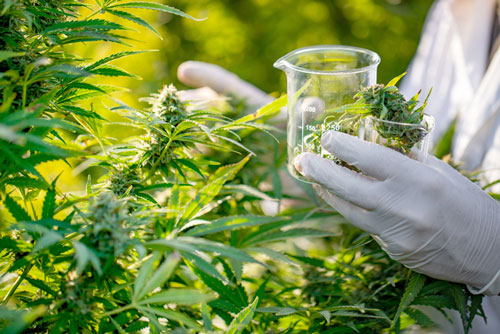Many seniors swear by cannabis or CBD for easing chronic pain and insomnia. But up until recently, there was little scientific evidence that cannabis products worked for these conditions.
A major new study changes that.
The study was published in the Journal of Psychoactive Drugs. Researchers analyzed a survey of 1,000 people who take medical marijuana.[i]
Of the subjects who took cannabis for pain relief:
- 80% rated it as “very or extremely helpful.”
- 82% were able to reduce or stop taking over-the-counter pain medications.
- 88% were able to stop taking opioid painkillers.
Of the subjects who took cannabis as a sleep aid:
- 84% said it helped them sleep.
- 83% said they were able to reduce or stop taking over-the-counter or prescription sleeping pills.
Dr. Julia Arnsten was one of the study co-authors. She points out that cannabis products are safer than mainstream drugs for pain and insomnia. Patients with chronic pain often increase opioid doses over time. That “in turn increases their risk of overdose,” said Dr. Arnsten.[ii]
More than 130 people die every day in the U.S. from an opioid overdose.[iii]
You can also get hooked on prescription sleeping pills. And they can have dangerous side effects. These include daytime grogginess, increased risk of serious injury, and even increased risk of Alzheimer’s and cancer.[iv] [v]
Dr. Gwen Wurm was another study co-author. She said NSAIDs like Ibuprofen “cause G.I. bleeding or kidney damage with chronic use.” And acetaminophen (Tylenol) toxicity is the “second most common cause of liver transplantation worldwide.” It’s responsible for 56,000 E.R. visits, 2,600 hospitalizations, and 500 deaths annually in the U.S.
CBD: The Default Choice
CBD (cannabidiol) is easier to use and safer than marijuana.
The obvious difference between the two is that marijuana makes you high. This can make it difficult to function normally.
If you are older and haven’t tried marijuana since your college days, you should know that it is far more potent now. A study published in the journal Forensic Sciences found that marijuana had an average THC content of about 1% in the 1970s.
Today, many strains top 25%. Even just a puff or two can make you high. Driving should be out of the question when using marijuana.[vi] [vii]
CBD has few if any adverse side effects. In some patients, it may cause tiredness, diarrhea, or changes in appetite, according to a 2017 review in the journal Cannabis and Cannabinoid Research. But this is rare.[viii]
This makes CBD a low-risk proposition.
Editor’s Note: How can CBD or cannabis help your health?
You won’t get the answers in the mainstream media… Read Independent Healing’s exclusive Cannabis Cure Protocol. It tells you how to use CBD or medical marijuana to feel better than you have in years.
To find out more, go HERE.
Related Articles
Cannabis Stops Autism Symptoms, Study Finds
CBD Helps Drug Addicts Quit, Study Finds
CBD Is a Powerful Antibiotic, Study Finds
Like this Article? Forward this article here or Share on Facebook.
[i]https://www.ncbi.nlm.nih.gov/pubmed/31264536
[ii]https://www.eurekalert.org/pub_releases/2019-07/tfg-cmb062819.php
[iii]https://www.drugabuse.gov/drugs-abuse/opioids/opioid-overdose-crisis
[iv]http://alzheimer.tv/2017/05/09/can-sleeping-drugs-increase-the-risk-of-alzheimers-disease/
[v]https://www.everydayhealth.com/news/risks-taking-sleeping-pills/
[vi] https://www.sciencedirect.com/science/article/pii/S0006322316000457
[vii] https://www.thestreet.com/lifestyle/health/side-effects-of-marijuana-14752788
[viii] https://www.ncbi.nlm.nih.gov/pmc/articles/PMC5569602/

